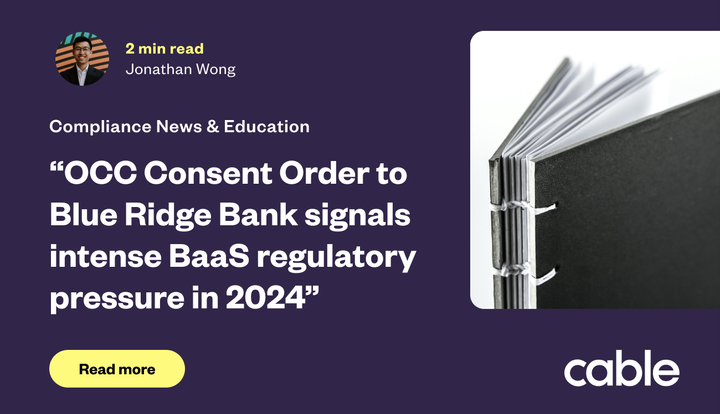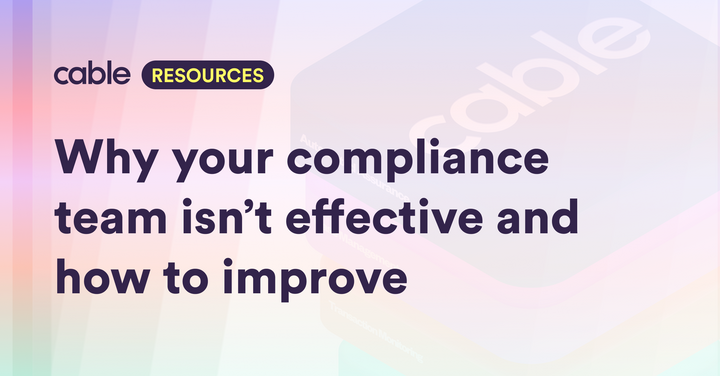What Is Automated Assurance?

For compliance leaders, managing financial crime challenges begins with implementing internal controls. But just having internal controls isn’t enough – they need to function properly.
For example, recent enforcement actions cited firms’ controls that were set up improperly or simply ineffective.
This is why assurance processes for testing your controls are absolutely critical.
But with regulators focusing more on whether firms’ controls actually work effectively, traditional assurance processes are too slow, manual, and limited to help compliance teams succeed in their jobs.
Do you know how well your controls are operating right now, not three or six months ago? Are your controls working correctly across all accounts, and not just for a small sample? Can you detect any trends occurring across your entire compliance program in real time?
Automated Assurance is a smarter, fully automated, and more proactive evolution to conventional assurance processes. Just as financial crime control tools have advanced with technology and automation, assurance capabilities now need to keep pace.
This post describes the key components of financial crime assurance and Automated Assurance, and how compliance leaders and their firms benefit from Automated Assurance.
What is financial crime assurance and Automated Assurance?
Regulated entities have two main financial crime responsibilities.
1. Identify risks and build controls to mitigate those risks
The first task encompasses things like KYC checks, identity verification, transaction monitoring, and sanctions screening. Many technology companies offer automated tools for these controls.
2. Independently test whether controls work
Assurance is the second task requiring firms to determine whether their controls are adequate and effective and enable them to comply with regulatory requirements.
Assurance is just as critical as setting up controls in the first place. Regulators and international standard-setting bodies increasingly want firms to assess if they effectively detect and prevent financial crime.
But assurance is done entirely manually today, with periodic dip sampling testing only a small fraction of accounts, and many spreadsheets, documents, and emails.
So how does Automated Assurance change things?
- Automated testing. Automated Assurance enables firms to automatically test all of their controls and regulatory requirements on a real-time basis, all the time. Firms aren’t reliant on manual dip-sampling testing a small handful of accounts.
- Smart data analytics. Using the rich data from this ongoing monitoring, firms get continuous, comprehensive feedback about the state of their compliance program with automatically generated data analytics and performance metrics.
- Growth enabler. Assurance is transformed from a reactive, backwards-looking function to a huge growth enabler for firms.
What do compliance leaders gain from Automated Assurance?
Real-time insights
- Assurance processes should accurately reflect a firm’s true state. However, dip sampling provides only a limited, single snapshot.
- Automated Assurance tests 100% of accounts at all times. Any regulatory breaches or control failures are identified as soon as they happen. Compliance teams can be proactive and dynamic, not reactive and passive.
Connected compliance trends
- Assurance should lead to actionable insights and improvements. But today, compliance leaders don’t have tools to digest all the compliance data from different control vendors, business units, or even BaaS/fintech programs in the case of partner banks.
- Automated Assurance connects the dots for compliance leaders by taking in and analyzing all available data, letting them discover new trends across their entire compliance program.
Confidence with regulators and stakeholders
- Assurance should give compliance leaders confidence in reporting to regulators, boards, and auditors. But with limited insights from manual testing, they’re at a knowledge disadvantage.
- With Automated Assurance, compliance leaders have the comprehensive insights and data needed to speak to regulators and decision-makers with assurance about their compliance program’s effectiveness. Compliance can become a growth-enabling team that says “yes” with confidence.
Why do firms want Automated Assurance?
Faster growth with confidence
- Firms can only grow as fast as compliance scales. Launching new products or expanding into new geographies often requires testing periods to uncover compliance issues and test new controls.
- With Automated Assurance, any new controls are tested with 100% coverage from Day 1, enabling firms to go to market faster and with more confidence.
Reduced headcount needs
- Right now, if firms plan for customer growth, new products, new BaaS/fintech partners, or geographic expansion, they have to scale their manual testing, which means adding more analysts.
- Automated Assurance gives firms a scalable tool that provides complete coverage across all accounts, products, and geographies, with zero additional headcount requirements as growth occurs.
Reduced remediation costs
- One of firms’ biggest costs is remediating problems discovered through manual testing. But dip sampling means only a tiny number of accounts are ever reviewed, so problems are usually found months after an issue first occurred.
- With Automated Assurance, firms identify regulatory breaches or control failures immediately, eliminating large remediations and reducing both costs and regulatory scrutiny.
Complete compliance
- Better technology is most firms’ top priority for improving their compliance programs. But the main barrier to new technologies is firms’ uncertainty that everything will work as expected and they will remain compliant with regulations.
- Automated Assurance gives firms greater oversight ability and confidence that their entire financial crime tech stack is working effectively. Firms are able to fully maximize new and existing tools and technologies, strengthening their entire compliance program.
Where can you get Automated Assurance?
Cable has built a first-of-its-kind Automated Assurance product, empowering banks, fintechs, and other firms to understand and improve the effectiveness of their financial crime controls in real time.
We take in 100% of customer data via API or other data-forward integration routes, and continuously monitor the data for regulatory breaches, control failures, and other risks.
Cable has also built a series of other dynamic workflow tools for compliance teams that complement Automated Assurance, including features streamlining Quality Assurance tasks and helping firms with financial crime risk assessments, reporting, and Management Information.
If you’re interested in learning more about Cable’s Automated Assurance product, enter your details below to receive a 1-page overview!



